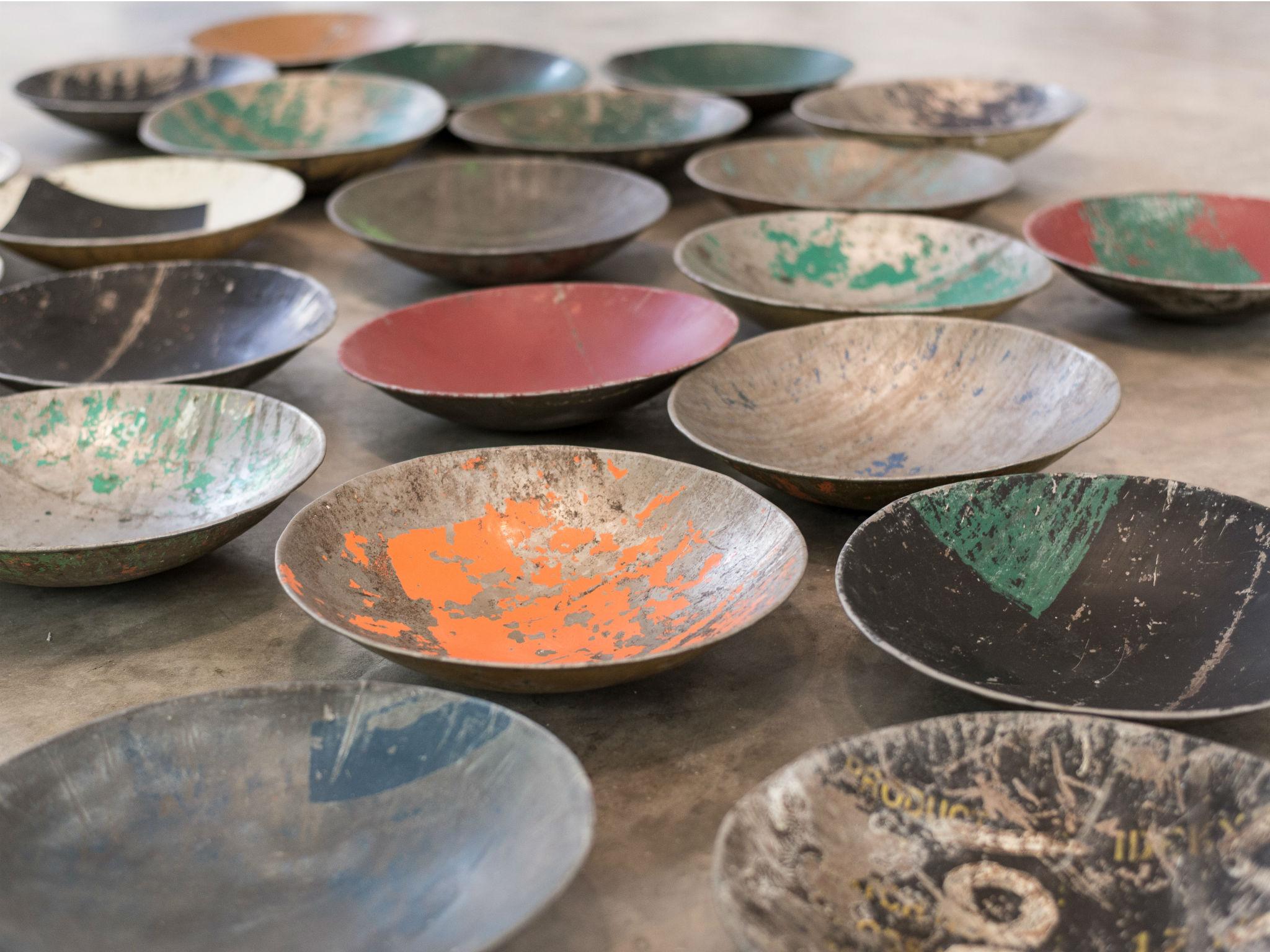Sheela Gowda, Ikon Gallery, Birmingham, review: Confidence is shown in the artist’s simple storytelling
The viewer is compelled to see the beauty and strength in these materials that would be ordinarily overlooked

I travel to Birmingham on one of the hottest days of the year to see the work of Sheela Gowda. I confess to being a long term follower of Gowda. Of all the installations at Tate Modern, Gowda’s Behold (2009), containing 4,000m of rope made of human hair and 20 car bumpers is one of the most memorable installations currently on show. To make the length of rope necessitated 1,000 seamless knots which the artist herself made. Gowda has said: “Handling a material makes me understand its limitations and its potential … I therefore do not outsource the physical aspect of art-making.”
Behold recently acquired for the Tate collection was shown initially in the Venice Biennale. It’s a mixture of hair and found objects – the steel car bumpers carefully hung horizontally wound together with ropes of hair allowed to loop and spill onto the floor. The talismanic quality of the hair, given initially as an offering to assure the driver’s safe passage, here subjugated by the ever present modernity of a burgeoning economy. There is a strong linearity contrasting with the looping-forms sculpture that recalls “drawing in space”.
Gowda, who was born in 1957, trained to be a painter in her native India before being awarded a scholarship to study in London at the Royal College of Art. Her tutor, painter Peter de Francia, “liked India”, she says and she was excited as previously she had never thought she would get to travel to Europe. She studied first in London and then went to Paris where she studied for three months and met her now husband Christoph Storz a Swiss conceptual artist. Storz introduced her to European conceptual language and the work of Joseph Beuys. At the time Storz was considering making a work encasing the Swiss novel Heidi in cow dung.
Returning to India, Gowda continued to use De Francia’s methodology of always challenging oneself. His words “always be inventive” and his warnings “don’t be too subtle” still implicit to her thinking. Her works also reflect her training as a painter with line, shape and colour, where line is the main form and her installations are often thought out with drawings in her omnipresent sketchbooks.
Gowda largely gave up painting when she returned to India in the 1990s. In her large new and as yet untitled installation at the Ikon she has been using found objects. Metal drums are flattened, segmented and circles are pressed out before being hand beaten into “bandlis”, the bowls in which sand, concrete and slurry are carried to construction sites. On the wall, flattened sheets are manipulated and twisted to form towers. On the floor are a variety of bandlis, each different from its neighbour. Confidence is shown in the artist’s simple storytelling. The viewer is compelled to see the beauty and strength in these materials that would be ordinarily overlooked.
In a second also unnamed work are coated rebars, rods and support poles that Gowda has found, cleaned and collected. This was a hard and physical work to make and yet it looks effortless. It is not trivialising human labour but drawing our attention to the beauty in ordinary craft. This is an artist that finds a material and then does what is necessary to make it work as an installation. She once said: “I do not begin a work without an idea, an intuition, often inspired by my encounter with a material or an image. But this is deliberately placed at the teetering edge. It evolves and changes, sometimes quite drastically. It is a process where I stand my ground but let the material challenge me.”
It may often mean hard work for Gowda but she does not shy away from it. She has given Birmingham and Ikon a wonderful, thought-provoking summer exhibition.
Subscribe to Independent Premium to bookmark this article
Want to bookmark your favourite articles and stories to read or reference later? Start your Independent Premium subscription today.

Join our commenting forum
Join thought-provoking conversations, follow other Independent readers and see their replies